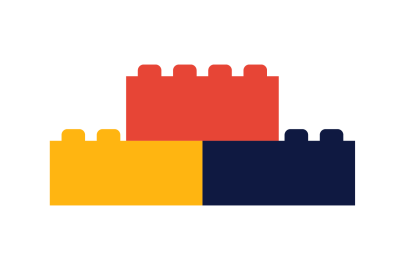the modern talent recruitment process
The competition for talent is intensifying as online job seekers browse dozens of listings in mere seconds. You need a deliberate recruitment process that sets up HR experts, hiring managers, and new hires themselves for success.
In industries like engineering and manufacturing, where skills shortages are worsening, it’s especially important to have a robust recruitment process as part of a clear talent strategy.
Improving your recruitment process isn’t just a good idea — it drives real business value, including revenue. Randstad helps companies like yours get the right candidates for your available roles through your front door, every time.
download page as pdfwhat is the recruitment process?
Recruitment is the responsive process of a talent strategy that focuses on finding candidates for available roles in your company. Successful recruitment ensures your company has the human resources it needs to function day to day. You need an efficient and proactive recruitment process to guarantee that you’re making the right hiring decisions for your immediate and future needs.
As a field, recruitment is fast-moving, with emerging innovations and evolving candidate expectations. Companies often struggle to leverage the most valuable recruitment methods and technologies, and they don’t always demonstrate to the right candidates they are a desirable company, either.
You may know exactly what tasks and responsibilities your new recruits will take on, and you may know the experience and attributes candidates will need to do the job properly. But finding the right candidates is difficult, and the consequences of unsuccessful hires can be long-lasting. Lengthy recruitment processes can become costly and affect business performance as well.
In a sense, your HR leaders must apply the same rigor colleagues in other departments apply to their operations: optimising costs, analysing results, and continuously improving processes. They must develop a simplified, holistic, effective approach to recruitment that aligns the right candidates with the roles for which you are hiring and with the future success of your organisation.
Teaming up with a recruitment partner can help you find the right candidates for your available roles. A recruitment partner may help you improve your long-term talent strategies, ensuring more successful recruitment efforts as your industry evolves; they may help with new projects as they arise as well.
why is the recruitment process important?
Finding the right candidates for your available roles is a costly process. When the talent you need is not actively seeking you out, you must dedicate resources to seeking that talent yourself, whether or not you have the internal budget and capacities to do so.
Hiring the wrong workers is costly as well. Costs associated with this mistake compound by the day and affect every aspect of company performance where human resources are critical to business success. The typical cost to replace an employee is 21% of the employee’s annual salary as well, Forbes reports.
A successful recruitment process ensures you find the right talent and acquire the right number of people for your workforce. It ensures you’re not wasting time and resources on inefficient recruitment processes as well.

The typical cost to replace an employee is 21% of the employee’s annual salary as well.
Getting recruitment right pays off. In complex jobs that are information- and interaction-intensive, “high performers” are an astonishing 800% more productive than average performers, McKinsey reports. A recruitment process that brings in high performers can become a foundation for business success.
transforming your business starts with the recruitment process
Although a poor recruitment process takes away organisational value, an efficient and successful recruitment process creates it. Finding and hiring the right talent reduces turnover, improves productivity and retention, and minimises the amount of internal resources required for success. As you will find, adding efficiencies such as digitisation and pre-selection can help as well in these efforts.
Working with HR leaders who think strategically about different roles can drive as much as a 40% increase in the quality of hires and a 12% decrease in first-year attrition, McKinsey reports — just by becoming more thoughtful and data-driven during recruitment and hiring processes.
Getting access to great talent saves you time, reduces the risk of bad hires, and ensures you find talent that transforms your business for the better. But you must understand the necessary steps, the right tools, and the best sourcing techniques to optimise your recruitment process. A recruitment or HR partner can optimise the recruitment process for your company, giving your team more time to focus on activities that generate immediate value for the business as well.
what are the different stages of the recruitment process?
Your recruitment process should be tailored to reflect the unique characteristics and requirements of your company. A successful recruitment process means allocating time and resources in a cost-effective way, ensuring only good hires come through.
Here’s a look at the five key stages of a successful, world-class recruitment process. You will see how a combination of technology with human empathy and ingenuity deliver the best results for your company and your candidates.
1. identifying needs and planning
Start by identifying the skills and labour gaps within your company. This includes understanding gaps within individual departments or specific teams. You must develop a deep understanding of your organisations’ available roles and growth objectives to proceed. Answer the following questions:
- Why do you need additional staff, and what are the wider business contexts of this need (e.g., its impact on sales or revenue)?
- What are the specific labour requirements of the roles for which you are recruiting?
- Do you need staff long-term, to complete a single project, or to handle a temporary workload?
- How will recruitment today contribute to growth (i.e., your company’s needs in 24 months)?
Once you have a foundational understanding of your needs, you can begin planning the most effective and relevant path for recruitment. Begin identifying channels you trust to connect with the right candidates. An HR partner that draws from an extensive talent network can help you find the ideal combination of connections and tools to meet these needs.
2. preparing a job description
100% of hiring success starts with getting the right candidates through the front door—and that begins with your job descriptions and advertisements. Writing a successful job description is the critical next step. In 2019, the Society for Human Resources Management (SHRM) described the job description as “the currency of recruiting — you should never hire without one.”
Find an HR partner that can help you develop a simplified, holistic, effective approach to creating job descriptions — aligning the right candidates with the role for which you are hiring, and with the future success of your organisation. You can also access our guide to learn more about writing successful job descriptions.
3. searching for talent
Next, you must select the best channels to advertise your job description. This may include internal channels to solicit employee referrals, but it must also include highly visible external platforms such as job boards (e.g., Monster) that get your opportunities noticed by as many likely candidates as possible.
With the right data and insights, you can choose platforms that ensure your advertisements are connecting with the right candidates. An HR partner may provide access to powerful talent engines that align appropriate job seekers with your available roles as well.
4. preselecting and screening candidates
Narrow down the range of appropriate candidates and conduct assessments to identify those who are the best fit for your company. This starts with a thorough preselection process, during which you can begin to identify suitable applicants.
The preselection process can be expedited with technologies like chatbots, which can make prescreening much quicker and more efficient. That’s because successful prescreening involves questions about hard skills that often require only a “Yes”or “No” response from candidates (e.g., known languages, having a driver’s license). These can be adjusted to include or exclude certain candidates. These tools can also provide instant responses and answers to questions—from applicants and your team—at any time of day.
This phase of the recruitment cycle may also include screening and testing, which help build a picture of an individual’s cognitive abilities, their potential to learn, and their fitness for the role. Testing also helps reveal relevant technical skills, such as the ability to operate certain systems or machinery. The decision on which tests or screening methods are necessary will depend on the unique requirements of the role.
5. conducting interviews and background checks
Once all the necessary assessments have been completed and you have identified the most suitable applicants, you can conduct interviews, background and reference checks, and any other evaluations you feel are necessary. A recruitment partner can manage a large portion of the preselection and checking process, presenting your team with only the best-qualified candidates and a clear explanation of their qualifications. That way you need only to conduct final evaluations before your approval. Or, you may choose to retain certain steps in the preselection process—such as personal interviews—and outsource the rest as well.
How HR tech can help streamline the recruitment process
Today, modern digital tools are playing a critical role in successful recruitment processes. Forbes reports that 24% of companies have begun using AI for recruitment, and 56% of managers will adopt automated technology by the end of 2021.

24% of companies have begun using AI for recruitment, and 56% of managers will adopt automated technology by the end of 2021.
Additionally, job seekers themselves are becoming strategic and data-driven in their efforts. Online platforms that automate aspects of the job search — leveraging artificial intelligence to match resumes with job ads, for example — are emerging. You must become strategic and data-driven yourself to succeed.
Employing leading digital solutions in everyday operations also affects recruitment. Randstad US found that a company’s reputation as a digital leader greatly influences 62% of job seekers’ desire to join it.
how to build an effective recruitment process
Building a successful recruitment process involves having a distinctive and compelling value proposition — one that is both authentic and attractive to your ideal candidates. Keep in mind, the onus is on your recruitment leaders to communicate this value proposition successfully and to attract discerning candidates as quickly as possible.
A rigorous and well-studied recruitment process can drive organisational improvements and financial gains. Here are five points to consider as you prepare your recruitment process:
1. reflect on which skills are well represented, which skills are missing, and past employees who were not a good fit.
What are your teams’ existing knowledge gaps and performance deficiencies, and what was missing among any past employees who failed? What are the hard skills, communication habits, attitudes, or personal qualities that will make new workers successful? And how can you articulate those needs to new workers who will fill those positions?
2. optimise your job descriptions and advertisements.
Job descriptions and advertisements are gateways to new candidates, so making sure they work in your favour is critical. They make the difference between choosing from a handful of great candidates versus a handful of poor ones.
Additionally, job descriptions help candidates determine if they will be happy and successful in the roles they describe. It’s critical you ensure each job description does this successfully in addition to aligning with your needs.
You can use your new insights and support from a recruitment partner to ensure yours are engaging the right candidates. Your recruitment partner can ensure your job descriptions target candidates who align with your future goals as well, not just for the immediate responsibilities of each role.
3. advertise your company culture and your brand.
Candidates aren’t just interested in filling a role — they’re interested in partnering with a company that will bring them long-term satisfaction and growth. Increasingly, job seekers align their personal growth with a healthy corporate culture, unique benefits, and industry best practices.
Showcase your company so that it stands out from your competitors in the eyes of potential hires. By describing life on the inside of the company, you’ll help candidates picture themselves as part of your team. Highlighting benefits and advantages for workers at your company reinforces your company’s brand and can help set you apart from competitors. You may tip the scales for high-value candidates exploring multiple options.
4. optimise the application process.
Make the application process straightforward and easy. You can do this by clearly defining internal processes and responsibilities for moving candidates forward or turning them away. Automating key aspects of the application process can help as well. For example, candidates without enough years of experience or without specific qualifications are better served by early dismissal, as are you.
Also, be honest and strategic about the next steps so that the right candidates move forward and the wrong ones turn away. Clearly define which qualities are “non-starters” among possible candidates so you can eliminate those that aren’t aligned with your goals. Define high-priority qualities so you can quickly qualify strong candidates as well. For example, highly desirable skills or past roles may warrant a quick response and passage to the next stage of the recruitment process.
5. formalise interviews to address critical aspects of the job.
Too many companies lack a standardised interview process. This prevents hiring managers from communicating and receiving critical information, including details about the candidate’s behaviour, situational responsiveness, and technical aptitude. Be sure you have a winning, formal internal interview process in place, or work with a recruitment partner who provides one.
In addition to finding employees, recruitment leaders should look to identify characteristics that every new hire should have—whether they are absolute necessities, or simply “nice to have.” These include natural talent, a willingness to learn, empathy, and confidence in their ability to make decisions. Similarly, you should know what qualities you do not want in a candidate.
Finding new workers is difficult enough. A recruitment partner can help you develop these best practices and create a recruitment process and talent acquisition strategy that supports your recruitment efforts in the long term.
working with a recruitment agency
An experienced recruitment agency provides the tools you need to recruit the right talent. The agency serves as an HR partner, helping you develop winning best practices for hiring and workforce flexibility as well. That’s because the right partner will develop an in-depth understanding of your company and your goals associated with talent acquisition.
What’s more, leading HR firms already have established networks of vetted talent. This makes it easier for you to fill vacancies immediately, then build your reputation and relationship with a pool of talented workers.
working with randstad
Randstad is a trusted human partner and global leader in the HR services industry. We blend the latest HR technology with our experienced human insights to find the perfect matches for your available roles.
As the largest HR services provider in the world, we’ve got an extensive global reach, but our local presence is just as strong. No matter where you’re located, we’ll deliver the talent you need to achieve your goals.
read more
recruitment options that randstad offers
When working with Randstad, your recruitment leaders can be as involved as they like — whether you want to take a back seat and let our team look after your staffing needs or you want to be more closely involved at every step of the journey. Companies can fully or partially outsource their recruitment functions to Randstad:
- recruitment of permanent talent: We work closely with you to source, interview, and vet a candidate to join your team on a permanent basis.
- recruitment of temporary talent: Randstad hires, manages, and pays the candidate on your behalf. You pay Randstad a rate to access the candidate’s services.
- inhouse services: We handle your HR processes from your location, managing everything from recruitment to onboarding and the daily workforce management. This solution is best suited for companies with a large number of flex workers.
As part of our Staffing business, we also offer payrolling services, taking over your administrative payroll burden.
get started with randstad
Achieve the highest standards of quality and continuously improve experiences for both your recruitment leaders and job seekers. Partner with Randstad for the right combination of tech efficiency and human connection.
recruitment process FAQs
what are the different types of workers I should consider for my roles?
Permanent employees are the most common types of workers. They receive salaries and may receive long-term benefits such as health insurance, retirement plans, and perks. Hire talent for permanent roles if you would like them to stay and grow with your company long term.
Temporary workers — freelancers or contingent staff provided through an HR partner — may be better fits for some roles in your company, as well as short-term projects, seasonal peaks, and unforeseen absences. These workers do not receive salaries; rather they are paid as vendors, typically on a per-project or hourly basis. Temporary workers often do not receive benefits, though some employers have extended benefits to their temporary workers.
A recruitment partner like Randstad can help you determine when hiring either a permanent employee or a temporary worker is the right approach.
why is the recruitment process so difficult?
Too often, recruitment is left to hiring managers, for whom this is not their primary responsibility. They don’t have time for the tasks associated with recruitment, let alone time to optimise the recruitment process.
In other cases, HR professionals are too far removed from the roles for which they are hiring. They don’t always have the best vetting processes in place and often burden the hiring manager for the insights they truly need.
what are the advantages of partnering with a recruitment partner?
A recruitment partner can take on much or all of the tasks associated with recruitment. The right partner will help you optimise the recruitment process long term and eliminate inefficiencies using digital tools.
why should I partner with randstad?
Randstad is the global leader in HR services and a universal provider of recruitment solutions, no matter the roles or types of workers you seek out. Our Human Forward philosophy means your prospects, workers, and recruitment leaders always have the best experience with the recruitment process. We also ensure that you improve your talent acquisition strategy in the long term.
Contact us today and discover why leading talent and companies continue to work with Randstad for their contingent staffing needs.
latest updates
-
 19 May 2025
19 May 2025how to engage your contingent workforce: three key considerations.
-
 28 October 2024
28 October 2024the pros & cons of hiring flexible talent.
-
 21 October 2024
21 October 2024how to organise and adapt your workforce amid constant change.
-
 04 September 2023
04 September 2023is your organisation prepared for the future of work?
-
 10 August 2022
10 August 20228 mistakes to avoid when managing a remote workforce.
-
 03 June 2021
03 June 2021how to reshape your HR strategy to survive and thrive.




